Suyog Ketkar's Blog, page 2
June 17, 2025
A Virtual Vote of Thanks for TWT Regional Conference 2025
We conclude yet another remarkable regional conference with a wealth of takeaways, extensive learning and interaction, and a heart full of memories.
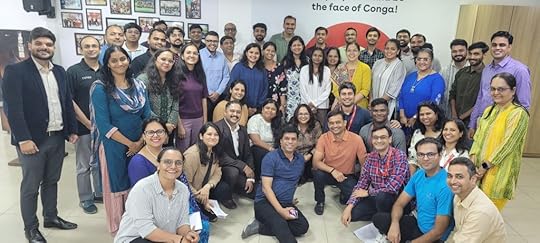
The TWT regional conference 2025 brought many first-time attendees, including Dipesh, who presented, and Yash, who shared an anchoring role with a fellow technical writer from Conga.
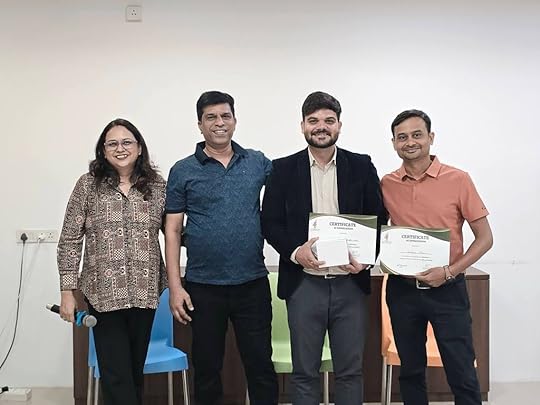
In Conga, we also witnessed an organization that hosted such an event probably for the first time! A special mention of the presence of their non-documentation teammates who, throughout the course of the event, transitioned from first an active audience into a bunch of folks whom I thought I had known my entire life! How many times does that happen now?

There were some incredible presentations with a bucket-load of tips and tricks for us. Through the activities, we explored challenges, interactions, and solutions.
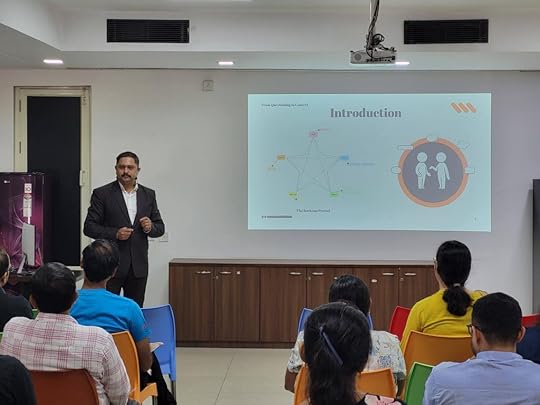
For the first time, I participated as a member in a panel discussion and represented my share of this figurative sky of technical communication with the others. It was insightful to listen to Anand and Mridula (as always)—it isn’t always that you get to share the stage with such leaders.
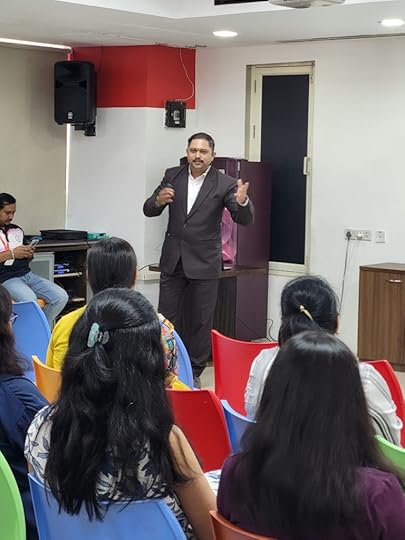
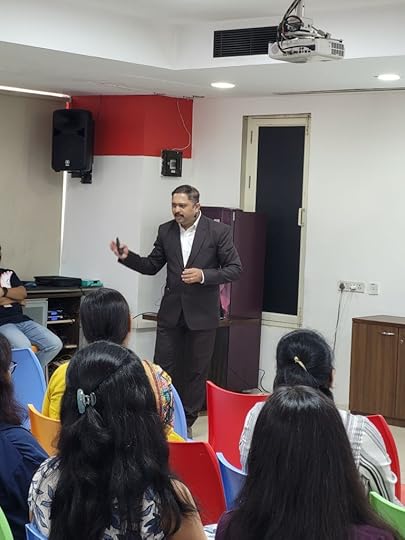
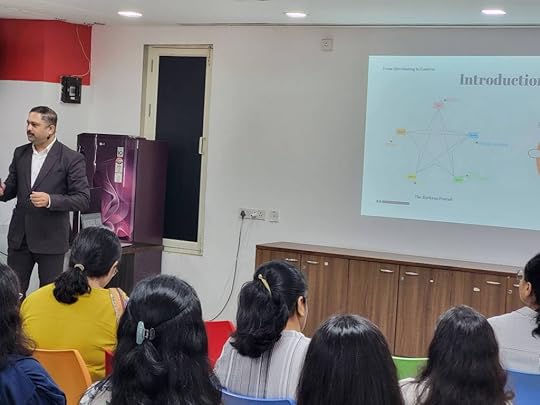
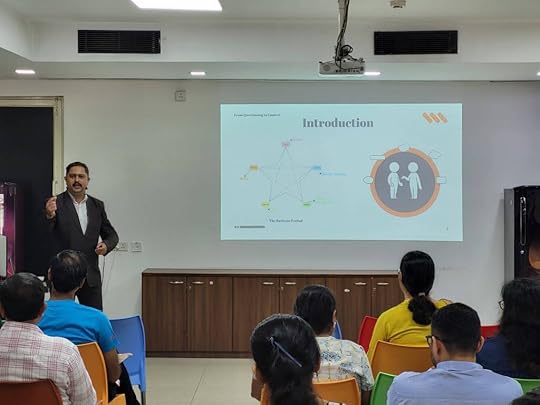
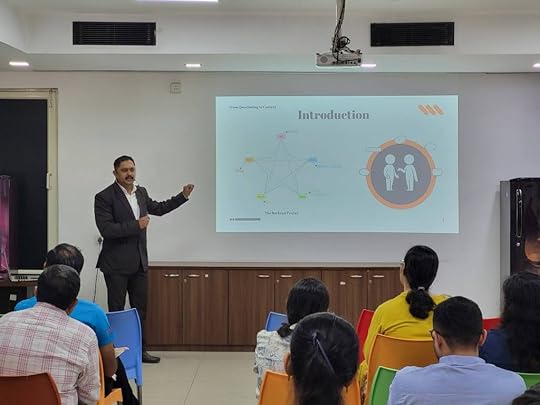
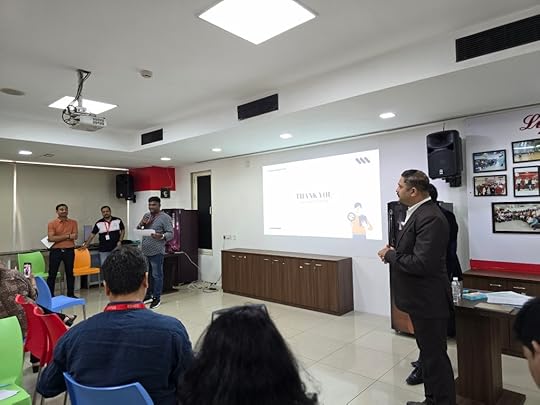
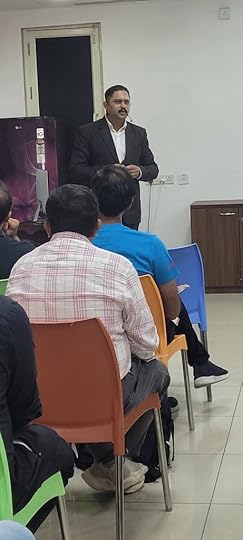
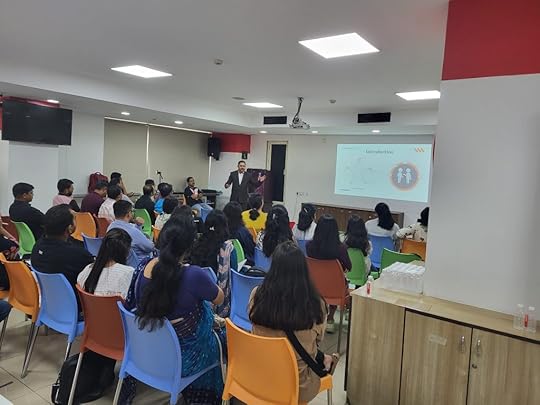
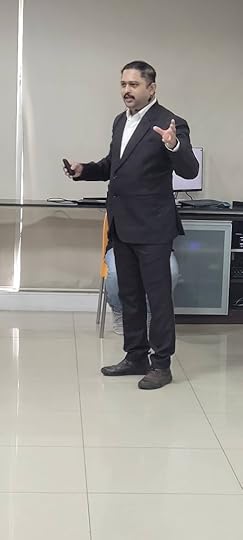
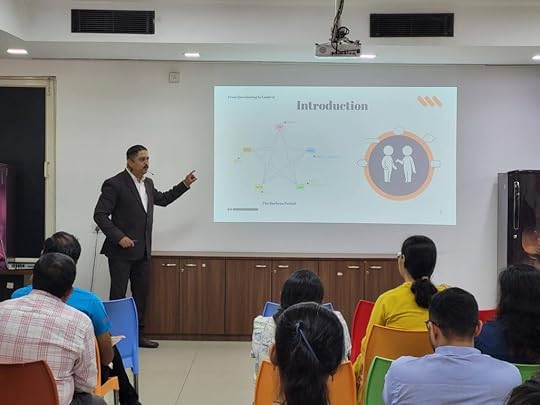
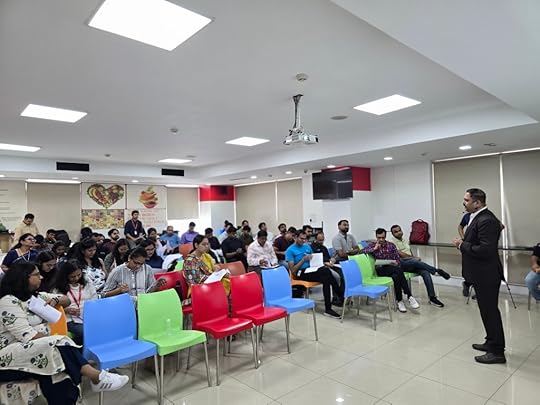
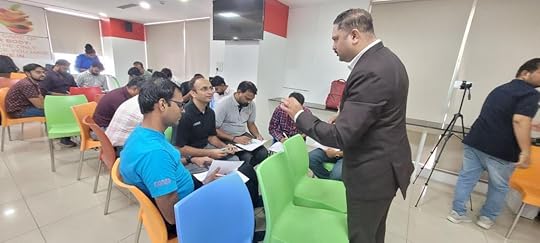
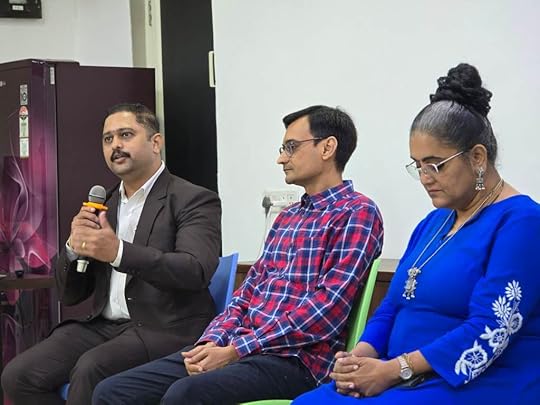
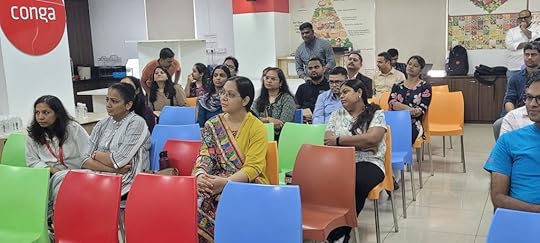
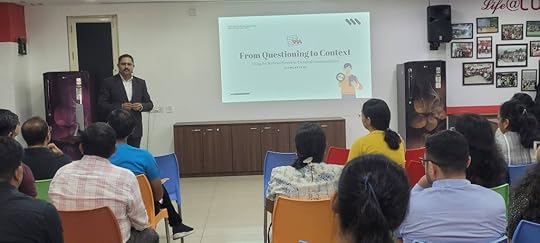
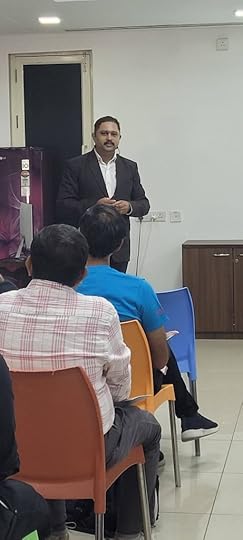
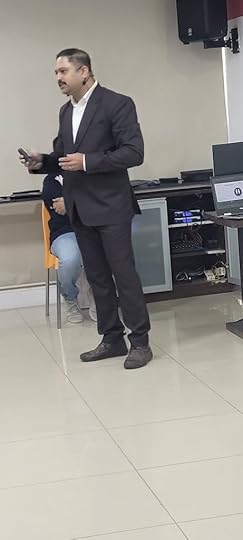
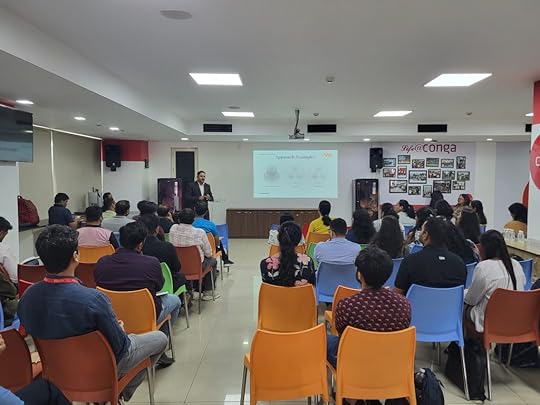
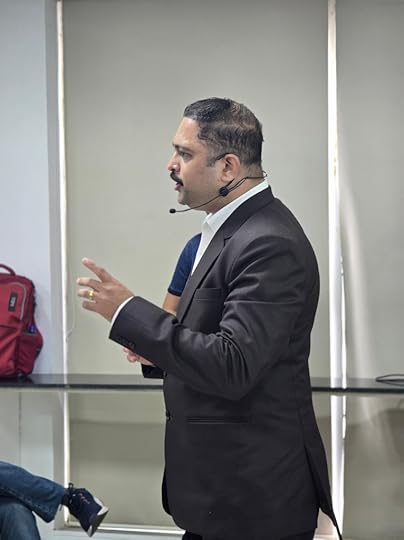
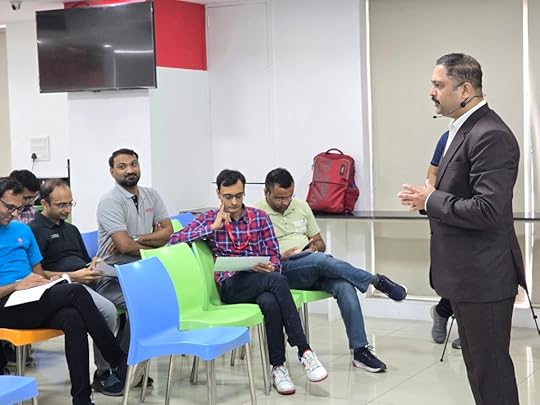
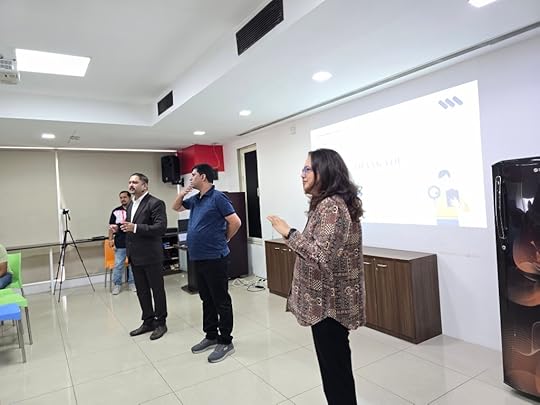
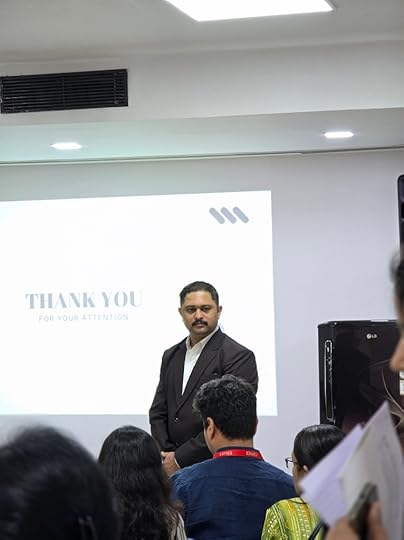
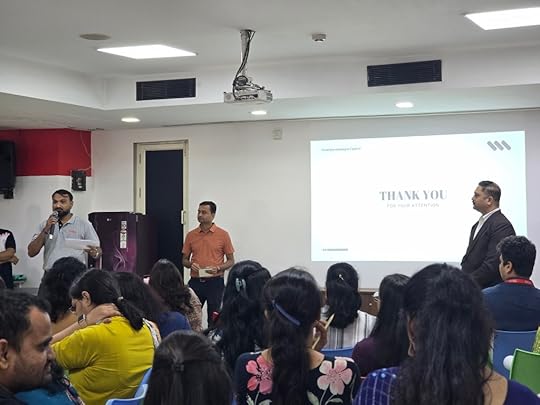
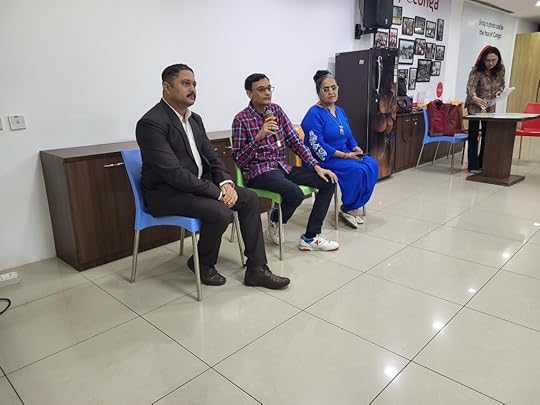
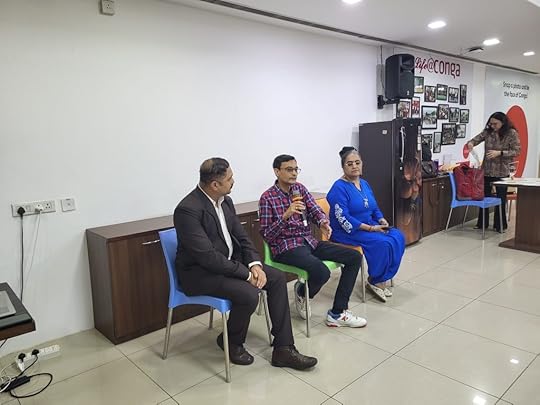
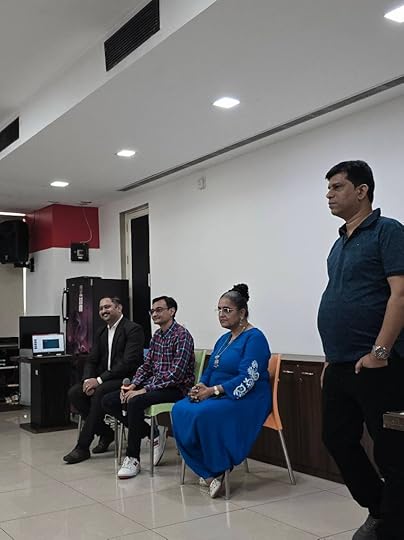
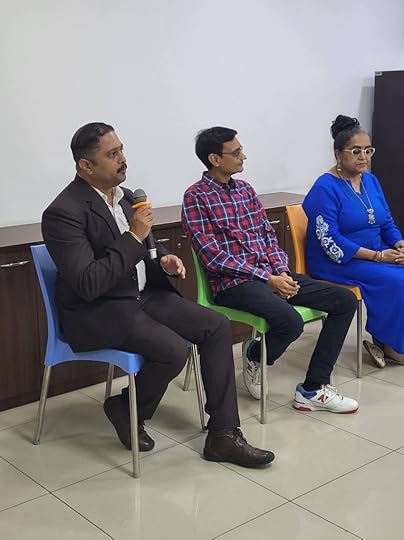
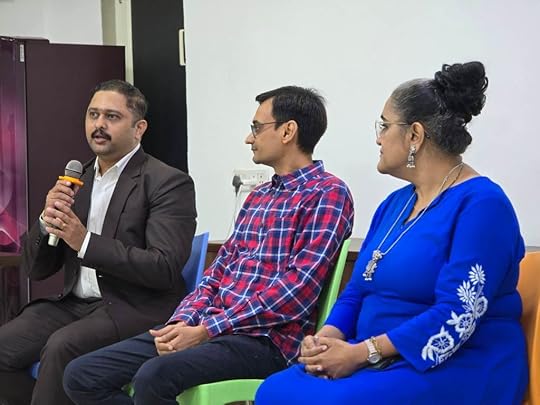
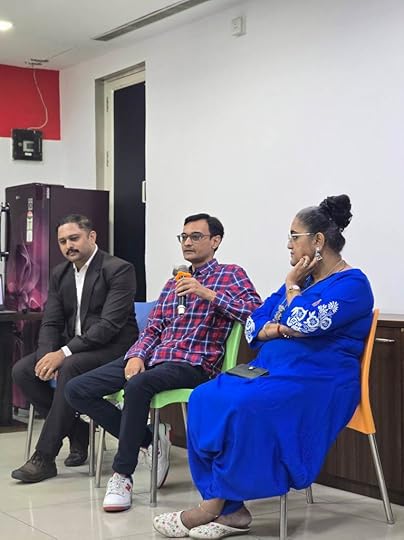
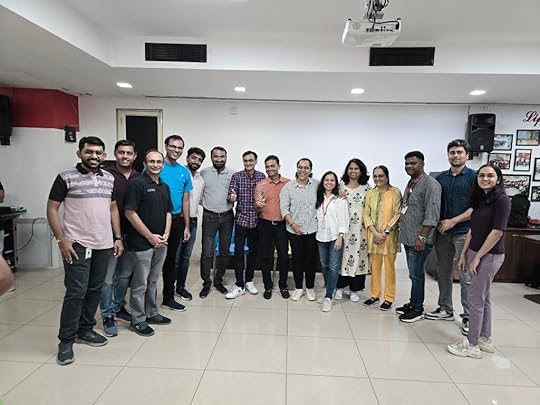
Thank you, TWT, for such opportunities! Thank you, Conga, for being such a lovable host. Thank you, volunteers, for it was your seamless weaving that created such a smooth fabric of conversations. And thank you, dear audience, for your active participation.

I look forward to more such a delightful dialogue with you all.
June 2, 2025
Ahmedabad Readers Club: A Heartfelt Second Meet!
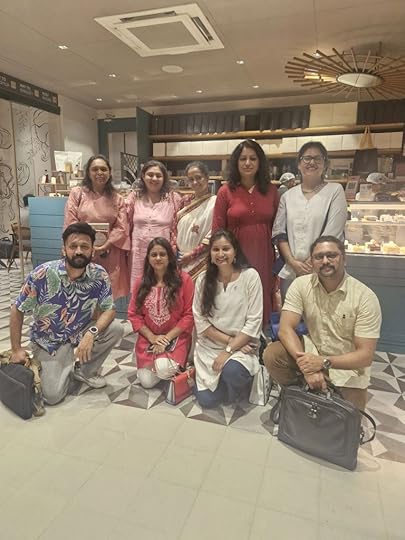
On May 24, 2025, the Ahmedabad Readers Club gathered in Ahmedabad for its second meet. As a grammar-loving book enthusiast, I found it an utterly engaging affair! Our group of devoted readers dove into The 40 Rules of Love by Elif Shafak. This sparked some healthy, inspiring discussion; the conversation was nothing short of transformative. The brilliant insights and diverse perspectives of our members ignited an electric, contagious energy. I’m already buzzing with excitement for our next literary adventure, where I hope to discover more insights!
Reflections from Our DiscussionOur discussion was inspired by Elif Shafak’s engrossing storytelling in The 40 Rules of Love. It unfolded into a rich exploration of love, growth, and transformation. Kinjal Desai eloquently noted that communication forms the cornerstone of every thriving relationship. Darshit Nayak observed that change is synonymous with growth. He emphasized how each character’s evolution in the novel stems from profound transformation. Together, we concluded that love itself is a transformative force and reshapes us in ways we never anticipate. Aarathi Vaitheeswaran, Amit Gurav, and I shared our thoughts. We mused that love evolves as we do. It shifts its form through the different stages of our lives. Ritu Batra challenged our assumptions. She suggested that love is meant to be easy. This idea defies societal conditioning that often complicates love. Karuna and Bijal Patel added depth. They described love as multifaceted. It manifests in countless forms across our relationships and life experiences.
These insights, woven together, underscore the power of thoughtful reading to spark meaningful dialogue.
I liked how Karuna summed up our thoughts together and wove it all into a memorable fabric of thoughts for us to takeaway. She also wove into this figurative fabric the thoughts and learning that she borrowed from the other book, Krushnayan, that she had been reading then. Overall, her summary brought about a whole new flavor to our discussion. Perhaps, that is why she became the person of the day for us all!
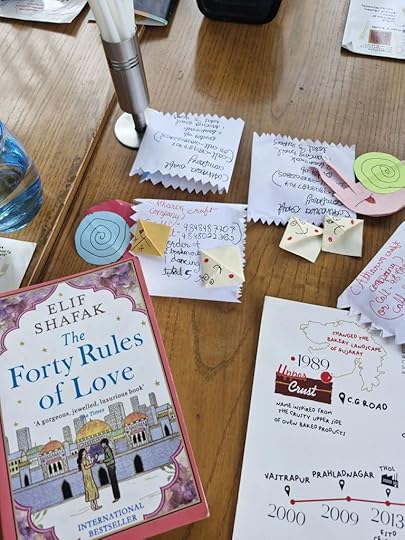 A Community of Curious Minds
A Community of Curious MindsThe magic of our meet lay not just in Shafak’s novel but in the connection we built. Each member brought a unique perspective to the discussion and helped create a truly immersive and memorable affair. From heartfelt reflections to spirited debates, the evening showcased literature’s ability to unite and inspire.
As someone who loves books, I was thrilled to witness such clarity and passion in our interactions. I want to extend a heartfelt thank you to the participants for our healthy discussion. I’m thrilled at the thought of our next meetup and eager for another literary adventure with this vibrant group! If you’re a book lover in Ahmedabad (and maybe a fellow grammar nerd), come join our growing community! Stay tuned for details.
Here’s to sentences as beautiful as the stories we share! 

April 13, 2025
First Meetup: A Journey through Books and Connections
Of the many book clubs that run throughout this calm yet busy city of Ahmedabad, I was invited to become a part of one. Yours truly couldn’t have denied. Thus began this wonderful chapter.
On Saturday, some of the members agreed to meet for the pilot episode of this journey. Since it was the first time we were meeting, we were as interested in books as we were in one another. A round of introduction followed with us ordering for ourselves beverages. Over our respective cups (or, a beaker, in one case!) followed hearty conversations. We intended to share our progress on “Once Upon a Curfew”, a book that we all had voted to read this month. But we did a lot more than review and discuss the book. Those who had read the book, shared their perspectives. What amazed me was how closely they all followed the story and character arcs.
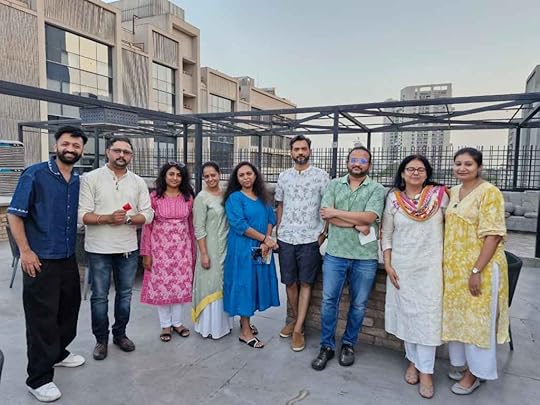
The author in me was delightfully received by willing, welcoming readers. Such an experience has an unmatched charm; ask any author. They all were curious to know what I wrote or why and how I wrote whatever I wrote. The story behind the story of the novel, then flowed beautifully into other conversations.
We also ensured that the others in the cafe were disturbed enough, so we were often inquired what we were doing! In such an actively passive way, we advertised our little group. In such a way, we added three more members who, here onward, will receive updates on the group’s activities.
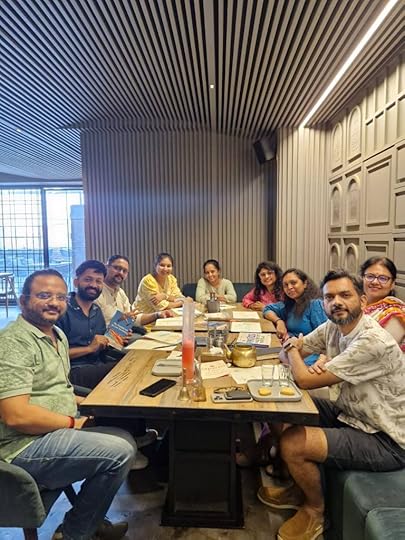
We also played casual games over which we discovered and exchanged perspectives. I found that the readers weren’t just accommodating to my up-selling my novel but equally creative in their interpretations. As if I wasn’t sure that that one trait, of imagination, wasn’t restricted to the chosen few. And we also learnt how to make folding, paper bookmarks. Mine is neatly tucked away preserving a page number in a book. Talk about putting skills to use!
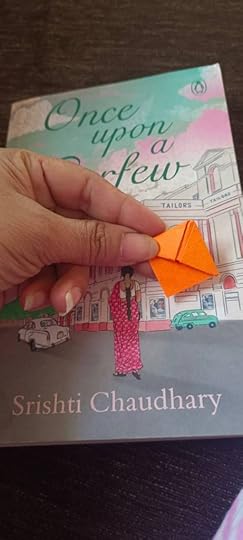
We clicked a lot of pictures and shot some impromptu, beginner video bytes. One of the readers is a professional when it comes to capturing videos. So, he has promised that we all will get our respective share of YouTube presence. I will leave a link for you all as soon as I get my hands at one. In the three hours that seemed to have passed in the blink of an eye, the overall emotion was hardly any different from, “we should do this more often.”
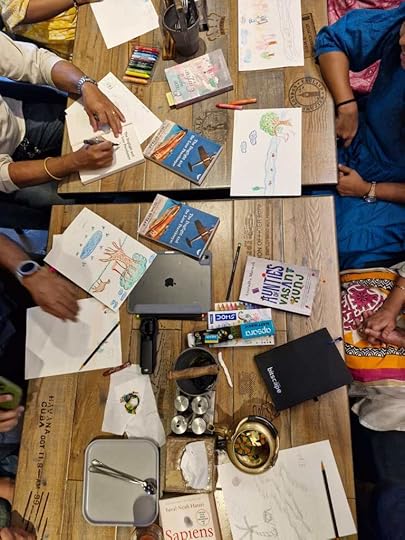
The event concluded with us sharing our recommendations for the next meeting. We all chose a fiction, a nonficiton, and a collection of poetry. It already is a handy list for any reader. But the idea is that one picks a book that they truly are comfortable reading.
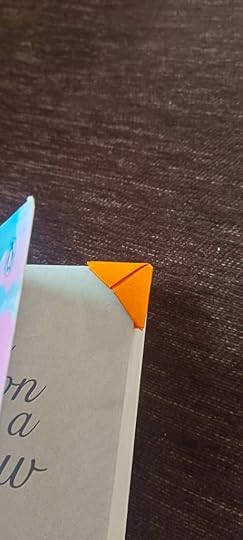
The life is busy with work; lots of it. Granted. But activities, groups, and interactions like these open up ways in which we can explore our social side. That is a strong reason for the introvert within me awaits meeting them all again. Until then, it is a new book at hand and a lot of things to ponder for the writer within me. Could I’ve asked for more?
February 4, 2025
What I learnt about designing effective prompts
This week, I was busy studying prompt engineering. The task also coincides with something I am doing on the personal front… more later. The task lent me a window to pare into the world where AI and writing coincide. And I couldn’t help putting together a handy list for reference.
This post is about what I found about the question, “How does one create an effective prompt for AI?”
A cue for priming the AI: Define the task or your problem at hand. For example, “Looking for shoes.”A word of appreciation: Instruct the AI about the appropriate style and tone. Your prompt should also include instructions on how the resultant content can be made easy to read, comprehend, and apply. For example, “Preferably for non-formal, casual wear.”A word of caution: Share information on handling error cases. You provided your expectations. Now, supply what the AI assistant must do if it can’t produce the resulting information. In this case, such a resultant scenario is unlikely. So, let us rephrase the exception. For example, “You can exclude black because I dislike the color.”A reminder about relevance: Contextual relevance is of paramount importance. Set the context for your your AI assistant to consider your point of view while producing results and responses. For example, “Something that I can use while traveling or commuting through the city.”A hint about desires: Instruct your AI on the format for the desired output. Supply instructions that help your AI assistant to produce actionable information. For example, “I’d prefer sneakers over Oxford-style shoes.”Your questions are determined based on your need. And, your need is based on a choice or decision you wish to make. So a good prompt should produce results and responses that help you decide more effectively and efficiently. For easier reference, concentrate your prompt on three points: why, who, and how.
Does it mean you load the prompt with everything that you can define? No, the more elaborate prompt confuses your AI assistant. Just like our users, even AI assistants rely on just the right context for the right responses. I’ve found that adding up to three contextual references helps in most cases. Your prompt can look like any one of the following options:
“I am looking for shoes for myself. Preferably for casual wear. Something that I can wear while commuting to my workplace or coffee shop.”“I am looking for shoes for personal use. I prefer sneakers over Oxford-style shoes. So, exclude black.”“Looking for shoes for gifting. Preferably sneakers. Or anything casual.”I’ve come to understand that training AI assistants for the right responses is like training your kids. You’ve got to get the right mix of input to get any desired output. And, much like parenting, prompting isn’t easy.
January 8, 2025
Why Ranga Abhimanyu is a Must-Have for Pen Enthusiasts
Here is the long-term review of the Ranga Abhimanyu…
I’ve been using my Ranga Abhimanyu in multicolored, mottled design for over a year now. I resisted from dropping a review because I wanted to test the pen throughout. In short, the pen is an absolute winner across categories. For details, skim through the review.
 Design and construction
Design and constructionI swoon over this one: Ranga Abhimanyu. In fact, its construction, feel, and comfort quotients are so high that my otherwise uninterested colleagues also picked it up. I selected the mottled design because it has almost all the colors of inks that I’d like to try: blue, cream, orange, and green. It wouldn’t matter whether I am using a standard or sheening ink. There will always be at least one base color and a sheening one that matches the pen color. Overthinking, did you say? Admirer of the beauty; that’s all I hear.

The pen is made of three solid hand-turned pieces of ebonite. It can’t be any simpler than that. And there lies the catch! You get enamored by its beauty. Each curve is as deliberate as it can be. Yet, the edged finials on the top and bottom of the pen give it a nice balance and contrast against the smoother curves of the body. You can hold it across the entire length of the section and you barely feel the step-down of its figurative love handles to the barrel. The threads are non-intrusive and so are its curves. For added oomph, I have even paired it with a few rings and stoppers around its waistline. But, we are still talking about a pen, aren’t we?

The cap unscrews in about a turn for me, which makes it a nice pick for quick note-taking. For those who are familiar with the design language of Ranga Pens, Abhimanyu is one without the pen clip. If you want to go for the same design but wish to have a pen clip, go for Ranga Markandeya. That’s the only distinction between the pen models. To avoid accidentally dropping the pen, I would suggest that getting a pen sleeve. I have dropped mine for 3-4 times, and skipped a beat each time that happened.

The cartridge-converter (standard international/Schmidt) is no-nonsense. The body unscrews in about 11 turns. While that sounds quite a lot, I reckon that it is because you can eyedropper the pen. Get an O-ring fitted in the little notch right at the end of the threads for an added security. But the turns are enough to keep your hands clean and your shirts stain-free.
Nib and nibblingMy pen came with a Bock medium nib. Although, I found it a little too dry for my liking. Mr. Kandan was kind enough to send me another Bock unit for my disposal. However, I have used my Magna Carta titanium nib unit with an ebonite feed. It fits perfectly and keeps the pen adequately wet. I have NEVER come across an instance of dried ink, skipping, or burping. The nib, even though not the default one, is up there with the bigwigs of the industry.
 Shipping, Delivery, and Brand-building
Shipping, Delivery, and Brand-buildingMr. Kandan ensures that each pen is made with care. He was thorough in his analysis of the Bock nib’s misbehavior. Our conversation lasted for about 45 minutes. He willingly conversed—that for a single customer who bought, for now, a single pen. Quite amazing. And, both the pen and the supplied nib reached me in time that was lesser than what he had quoted. Impressive.

If there is one pen that I recommend you to buy, aside from my grail pen—Pilot Custom 823—it is Ranga Abhimanyu. I want to get another one, already—this time an acrylic version.
I bet you can create a one-pen collection of this one. However, keep in mind that you will want to own at least a couple! So, it will more be like a one-model collection of fountain pens. But, much like it is with the company of good folks, the more (pens) the merrier it is!
January 1, 2025
Discovering the Joy of Writing and Self-Discovery
It is rare to come across a path that aligns with hobby, money, and passion. Nothing matches the comfort of being able to do something that brings you money, especially when it is what you love doing. Not to say I do not have any other hobby. About half of my acquaintance knows that I love to use fountain pens.
How do I define writing?Writing is the antidote of its own poison. It is only after you get addicted to writing that you resort to writing as the cure. The cause, symptoms, consequence, and sometimes aftereffects gradually show up. When you begin living in hyper-slow motion, where the world is running past you to their respective—sometimes aimless—destinations that you begin to slowly grasp the funny design in which life took you to this detour called writing. And, in this tranquility and quietude, the tirelessly long and languid afterthoughts of thoughts pause for a moment before they step aside for you to look back and forth in the timeline to choose which ones continue to stay in your memory for long. That is when you truly begin to write for yourself.
Writing also happens when you begin to see in yourself a trough that is filled with an equation of thoughts and thoughtlessness. The equation where acid and base don’t balance out. It is that out-worldly experience where the matter meets the anti-matter. Only, when you witness this explosion, you implode with words that float in the nothingness. The thoughtlessness that is filled with countless words sometimes passes by you amazingly fast. Sometimes, it comes at you with all the time in this eternity. It is funny how even though dreams can completely justify your boundless imagination, you aren’t diligent enough to catch the insights that dreams share. Dreams also, in one way, share this antidote that writing supplies to your conscious mind. But you are either untrained toward or unaware of the importance of either in your life. A larger part of writing, therefore, remains a residue of what was originally sent in the form of ‘you’.
Writing is like meditation. It opens you up to the possibility of looking into your mental faculties. You begin to knock those mental doors that you had either kept locked on purpose or had never bothered to tap on to. Such is the beauty of life that we are constantly oscillating between the convincing state of lack of conviction and the state of unconvincing conviction. We cannot decide what to do, where to go, or when to arrive. But, writing helped me way-find myself.
Who are writers?Writers are adept at and committed toward defining and communicating the heartfelt pains in a manner that is both effortlessly applicable and universally relatable. It is also true that writers are good conductors of thoughts. They are ductile to all human emotions and situations. And their range of words and adjectives is, if not wide, at least witty, wise, or workable. Oftentimes I am asked, “why do you write?” I write for peace. I write for content. Not the content that you think of when you hear the word. The feeling of being content, satisfied with what you have and what you gave. The interesting thing is that you must like to keep your word once you have given it. And you don’t have to be a writer to realize the play in words.
Can writing be taught?The impact of good writing lies in its effect on dear readers. We often wish to experience the joy of composing a good writing piece by equating it with the feeling that readers get the intended message when they get to that piece. The sense of revelation exemplifies if it outweighs the simplistic combination of words. And the awe engulfs our readers with imaginary spirals that connect numerous dots of events in the readers’ timelines. If they find it relating, they find it worth reading. An often-ignored by-product of writing is learning. We learn more when we are not conscious of the learning process. A powerful thought has the power to disguise its learning under the wraps of a vibrant fabric of words. I’m often asked how I learned writing. And the reverse of it, too: can you teach how to write?
To some extent, writing cannot be taught. I can lay down the rules for you to think. But I cannot make you think. I can guide you to channelize your thoughts. But I cannot transform your thoughts for you. You must do your own thinking. There are methods for you to structure your thoughts, but there aren’t any rules or prerequisites on how you must transform your thoughts. Much like cooking, everyone has their own recipe. In application, there are only methods, and not rules. And that’s what makes the whole process exciting. That is why, writing must only be learned. The funny thing is we still learn what cannot otherwise be taught. Self-introspection, observation, learning by failure, and learning by experimentation are underrated techniques on how we often learn something even when it is not taught.
Thinking and overthinkingA large part of writing, actually, is thinking and rethinking. You get a thought. And then you give that thought a thought. As you keep thinking over it, you begin to compose a mental way in which you explain yourself what it is and why is it the way it is. Much like a mathematical, stepped derivation. What most writers define as, “Oh! It merely comes to me” is often an unregistered act of repeated, progressive iterations of introspection. Of course, it is a superpower to know when to stop right before stepping into the overthinking zone.
March 27, 2024
The Interplay of Information Architecture and Fictional Storytelling
As humans, we’ve been telling stories for a very long time. We’ve grown ourselves out of the various phases of human evolution because of the untapped contribution of stories in our lives. In this article, we discuss the interplay of stories and information architecture.
Insights from information architectureInformation architecture is the structure in which we produce information for consumption. It means that I must invest myself in understanding how I, as a content designer, can understand something before I help my readers put it to use. I understand this by using an analogy of online maps, for example. To reach anywhere, you input the destination, choose your mode of transport, and supply other conditions. Your route is your information architecture. Your choice of vehicle is your persona. Each persona has its set of conditions, speed of learning, and a preferred alternative (more than one route, in the case of online maps).
Let us look at what insights we can glean from information architecture and if we can apply those insights in fictional storytelling.
On perspectivesThe following words are from a poem I wrote in 2021: “Just as you have companions, my friend, I have stories to keep me company. The cat has only nine lives, remember? As a writer, I realize, I’ve rather one too many.”
Sometimes, I am the user; sometimes, I am the project manager; sometimes, someone from the third party or vendors; I am everyone. I can assume any voice depending on the information I want to convey. I can adopt the indicative, imperative, or subjunctive mood. I can use the third-person perspective, much like Dr Watson’s voice that plays Sherlock Holmes’ mysteries in the reported speech. Or I can refer to the reader by a generic pronoun called “you”. I can sound encouraging through my words, such as “We recommend using this method for configuration”. Sometimes, I can sound cautious and be didactic, “Wear protective glasses when operating this machine”. I can also be someone who tells how the information must be accessed. Or I can be someone who tags the information for translation and use.
Each perspective has its way with words and will appeal to a specific set of readers, accordingly. I will explain things differently if you are an administrator and not a business user. As a technical writer, I can assume any role and adopt any voice to get my point across. We’ve discussed how we can make more believable characters and how we can use world-building to create contextually meaningful messages. The same thing can be applied using information architecture to create categories of contextually driven content.
On feedbackThe reason feedback is often called a gift is because it lends you invaluable insights into the seeker’s brain. If a user story helps you step into the seeker’s shoes, feedback lends you an insight into their reactions and responses. Did the feature deliver what the users need? Did the users find what they were looking for? Did the users configure it correctly? Did the users accomplish what they had set out to? Will the users remember where to find the feature and its information again? Numerous such questions help draw invaluable insights. However, gathering feedback can be difficult. Therefore, to implement documentation and gather feedback, some organizations have begun using chatbots. Soon, we might use technologies like chatbots, artificial intelligence (AI), and machine learning (ML) to drive company-specific generative content, to help improve the findability of information. This translates to fewer support tickets and improved results from our cost-to-benefit equations: a better bottom line. All successful fiction authors follow the same or similar breadcrumbs from their readers. They are keen to glean such insights and implement them into their works. And much like fiction authors, we use the user’s footprints to lead us to the right design.
On clarity of thoughtOf the many things that mire out my editor’s brain is the absolute thoughtlessness and absence of clarity that sometimes drips through a writer’s work. I infer, “If that’s how they write, that’s how they must think.” But sometimes, it is not the writer’s fault. It is the fault of the premise with which they begin to think. It turns out there is an order in which we must fix such issues. Begin, that is, with defining the customer’s expectations. We often get into this habit of describing our products’ features. But is not useless to tell what the product does? I can vouch that users are not bothered about the features. All they want is the underlying benefit.
In the context of fictional storytelling, this is much like the cliché, “show, don’t tell”. We must begin with the feature, yes, but we must end with the benefit. Perhaps, this is why, in the context of technical writing and information architecture, we focus on the underlying benefits. As a rule of thumb, ensure that your content doesn’t tell what the product does but what the users can do with it.
On techniquesAmongst the few techniques that help me write better are:
* Progressive disclosure: This involves spreading the message such that it unwraps itself over time. It unravels itself before dear readers such that its learning curve remains relatively flat. I prefer to use this structure when I am creating conceptual content. I lead the users to explore the concept before they delve deeper into the content. Consider this as an inverted pyramid where the tip of the pyramid—which, in this case, is toward the bottom—denotes the most important message. The focus is on comprehension. In fictional storytelling, we use progressive disclosure for world-building and suspense revelation.
* Pyramid approach: This is easily the most used method in technical communication. I reserve it for all referential content and tasks. I share the most important information before I share the remaining content. This means the content is more usable. In fictional storytelling, we use the pyramid approach when describing an important event or narrating anything that involves a lot of action and drama. It helps create gripping content.
On copyeditingSeldom do we come across a better job than one that pays us to find other’s faults. I kind of love and hate it at the same time: On one hand, I speak of it in delight, but on the other, I abhor the idea of finding faults. However, I do like the idea of making things better. Besides, the task of editing makes me a better thinker. As the copyeditor for my team, I cannot afford to be slippery in my approach, thoughts, and words. At the same time, as a content designer, I cannot undermine the benefits of my copyeditor’s vision. The same skilled artistry that (sometimes) irritates my teammates also empowers my users. I cannot fathom not applying it in fictional storytelling, either.
Speaking of which, let us look at the insights that we can glean from fictional storytelling.
Insights from Fictional StorytellingFiction is imaginary literature that is written in the form of prose. It can be short stories, full-length novels, and epics that create a series of novels surrounding the life of your fictional characters. Fiction writing and storytelling both are about the art of writing stories. The difference is that writing is an art and storytelling is a skill.
Let us look at what fictional storytelling teaches us about our profession woven around writing, and if we can apply the insights in information architecture.
On charactersI cannot deny the power that our everyday conflicts have lent to our mental decision-making system. Conflicts trigger response, which triggers action; that passive sense of purpose (of resolving the conflict) is reassuring to us. It is even more useful if we can summarise our conflict in a single sentence. From start to finish, we can take our readers on a journey where they move from a mere thought to a compelling urge. We can drive their imagination to wherever our words take them—with them following us compulsively and unconditionally. I also like to couple a character’s conflicts with their character sketches and motives. In all kinds of writing, those writers who do not characterize motives tend to lose their readers. Only when your characters can passively show why they are the way they are, your readers will understand why the characters feel or do things a certain way. Bear in mind that the readers don’t have to agree with the characters but must only understand them.
In the context of technical writing, personas are often detailed descriptions of who our users are and how they behave in a certain way. We use these personas to create content that matches the users’ requirements. Such writing has a twofold advantage. One, persona-based documentation is findable. Two, it passively empowers the readers by lending them the power to choose whether they agree with the persona. They understand the persona’s perspective and find common threads.
On choicesWriting fiction is difficult. It is a daunting task to find your way through emotions to seek the right description that matches the little bracket of word choices you and your readers are blessed with. To make the readers bleed through their eyes, you must first bleed your way through words.
You must consciously choose to rewrite repeatedly until you get to those core words that move your readers. Brevity in describing emotions is the key to this transaction. A character’s pain, for example, might make us feel that our pain is a lot lesser. In this way, writing is compassion woven into words. But this has a flip side. There is another type of people who find others’ lives as joyously painful and theirs to be painfully joyous. In another way, writing is decisive; it makes you take a stand. It must.
While I agree that there is no place for compassion in technical writing, I see the sense in which it is applied. All troubleshooting information and, sometimes, error messages are written in the same format: what happened, why it happened, and how to fix it.
On observationWe all uniquely understand reality. Each of us has a design, a pattern in which we comprehend this world. The fictionist within me is enamored by the enormous amount of detail that goes into this kind of world-building. I am fascinated by the works of writers like Charles Dickens whose novels are decorated with characters that speak who they are. For such writers, Babu from Mumbai doesn’t sound like John from England.
I want to make my characters believable, otherwise, how might you—my dear readers—will become the invisible observers of the characters’ lives? How will you believe that you are witnessing everything in real-time?
World-building does not apply to technical writing. At least not directly. But we do create documents that contain information built around the insights from world-building. We have different product and installation specifications for on-premises versus Software as a Service (SaaS) products. We have prerequisites for installation and requirements that might help our users in creating and deploying a virtual environment for testing. The more accurately we can describe the details of the environment, the more accurate the user experience is.
ConclusionThe art of information architecture is primarily restricted to setting the design right. What it lacks is often supplied by the insights gleaned from imagination. This is where the faculties of fiction and information architecture meet.
On conflicts and resolutionsTo create a brilliant design, you must pare usability down to its simplest form. And, unless you understand the user’s point of view, it is difficult to know what matters to them the most. I am always curious to know what my application’s users think and want. I break those insights down into ‘manageable chunks of workload’. The input of workload contains cues to help me quantify output.
When I say, ‘manageable chunks of workload’, observe this hierarchy: User stories are divided into user scenarios, and user scenarios are divided into use cases. Each use case, therefore, has specific steps to reproduce, assess, improve, implement, and measure—in the same order. Much like with fictional storytelling, each use case, user scenario, or user story has a unique design in which the user comprehends, refers to, searches for, and builds their understanding.
On skilled storytellingA world of masterful storytelling involves the elements of good content and good intent. It is not just how you do things, but also why you do them that impacts the people around you. Good content is “what and how” (underpinned by information architecture), whereas good intent is “why” (underpinned by fictional storytelling).
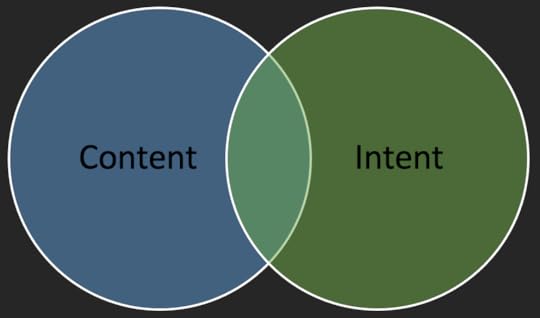
People often say that you eat first with your eyes and then your mouth. Likewise, you first listen to a story with your ears and then your heart. If the structure isn’t right, it might never reach your heart. A good design is like a delightful recipe that not only tastes good but also looks mouth-watering.
On wordingThe art of writing is in meeting shifting targets. We all learn as uniquely as we explore. Yet, when it comes to reading, we all move in one direction: From the logical start to the logical finish. Yes, we sometimes skip the timeline to introduce or understand topics of interest. However, it all still points in only one direction. This “shifting target” of moving from the figurative Point A to Point B is immensely fulfilling for the human mind. It lends a sense of satisfaction. In one sense, writing is so much like life itself. We all learn life lessons before we glean the benefits. Likewise, while reading, we learn from wise words before the story fructifies.
Such is this mix-and-match of information architecture and fictional storytelling that leads us to invaluable insights into both fictional and functional worlds.
September 18, 2023
“Hand-writing” and the sweet spot
I’ve often wondered if we’ve lost the charm of living to the added convenience called the digital life that we’ve constructed around us. I say that because in my increasingly busy life as a content designer at a software company, I spend the majority of my time in front of screens. Therefore, sitting down to practice handwriting is a much-needed relief for me.
So, here I pen (drumrolls for the obvious pun!) my thoughts on why I think writing (by hand), the analog experience, is the sweet spot.
The sweet spot between fiction and functionI am yet to hand-write my first fiction. All I know is that I am a compulsive re-writer. I re-write more than I write. So, typing away is easy. Writing by hand can be difficult. But I do not deny the possibility it lends, for I can think at a pace that matches my pen strokes. This lends me that extra second to compose my thoughts in a better way.
While I agree that I cannot always come up with suitable articulations, expressions, metaphors, phrases, or words, I do not want to be too bogged down by the pressure of editing just yet. I do not want to become so busy re-writing and editing that I forget to write. To reach new shores, I must first set sail. All I need is a pen, some paper, and a determination to begin the voyage.
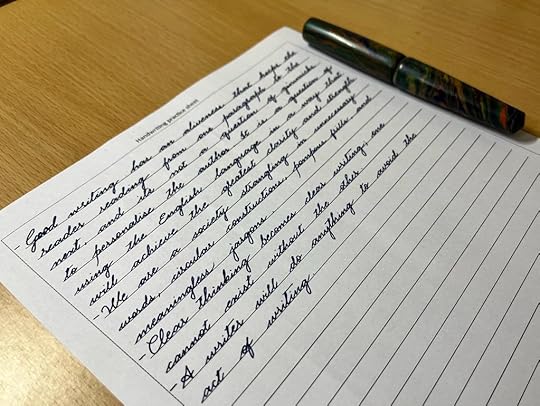 Of the many pages I have proudly inked with quotes from popular authors.
Of the many pages I have proudly inked with quotes from popular authors.Featured here is Ranga Abhimanyu (ebonite) with Magna Carta titanium nib and inked with Pilot Iroshizuku Shin-Kai.The sweet spot between being an introvert and an extrovert
All textbook definitions of introvert are incorrect. Yes, by design, I am an introvert; I am principally concerned with my affairs. Yet I like to flaunt how my favorite ink flows through the pen and shades away or sheens as it dries on a paper. I like to show off my earned collection of fountain pens. I like telling people why using a fountain pen is a hobby they too must cultivate. The topic of fountain pens gets me started. I WILLINGLY talk.
Does that sound like “someone who is pushed to oneself” to you? But then why would I talk about fountain pens to those who don’t even know how to hold one properly? “What a wasteful transition, that is,” the ambivert within me opines.
The sweet spot between the analog and digital worldsFor once, it is nice to see the world go schmoozing past while you perch by languidly on your thoughts. It is comforting beyond belief. Calming. Like cracking the neck or stretching your back. One moment, you are in chaos. In another, you are mentally on a different planet. If chaos is where I had lost myself, calmness is where I rediscover myself. Amidst that calmness, I run my fingers along those carefully curated curves. In my hands is that unmatched, machined (or hand-turned) delight that, whenever meets paper, translates my wordless thoughts into tangible volumes of pages. Oh, that crack of the neck. Oh, that pen put to paper.
September 3, 2023
Wayfinding through Everyday Challenges at Work
“Do working hours drive you crazy too?
Often there is a lot of work to finish or even in normal days there are late eve meetings or some deadline to meet. Have you faced such a situation? If yes, what are such situations and how do you manage the work-life balance?”
Someone posted the questions on a regional WhatsApp group. I can hardly be blind to the question. And since there is so much to say, I thought of sharing it in a post here.
Yes, the prolonged work hours have now begun to show their effect, especially because I have not had the opportunity or window to go on a vacation. It has been some years since I took a leave for a few days at a stretch—and have purposely been away from work. Within this time, I’ve noticed that my capacity and productivity have gone up. However, my boiling point has considerably lowered. This means I get more angry more easily and more frequently. Even the fact that someone put up this question annoyed the hell out of me. 
However, with an emphasis on the word “However”, I have also noticed a few unexpected changes in me. I have become more patient with myself. I take time to understand things and I excuse myself for it. I feel tired, drained out, fatigued by the end of the day and I can barely crawl to my bed, but my quality of sleep has tremendously increased because I know that all I have to recharge myself are those five hours. I have entered into my automatic zone where I can barely feel myself doing my work-related tasks, it just comes naturally. In fact, if anything, I feel bothered and uneasy if I do not face any challenges on a given day. Each passing day reminds me of the “Hamdard’s Chinkara” advertisements that were aired when we all were young. Challenges or not, I feel I must pay either way; either with my callousness and lack of experience or with my dexterity and lack of time.
A lot of it depends on how you approach your work. AND a lot of it depends on how dependable your manager thinks you are. If they believe in “leading by example”, they can give you the authority, responsibility, and ownership of your products. It is an unsaid agreement that has mutual benefits and mutually dependent conditions. If I were an individual contributor, I’d choose to step up to match my role, expectations, and work. I’d clearly communicate how my doing my work impacts MY performance and MY life. But, if I were the team lead/manager, I’d communicate how my sharing the ownership and flexibility will help the TEAM grow. I’d share how little contributions from the team contribute to making a huge impact.
I’ve observed that unforeseen challenges, scope creep, new tools and methodologies, and more products/projects/features, all make me a better “me” every day. I am increasingly becoming efficient at compartmentalizing my thoughts and tasks, accordingly. Sometimes, I can foresee and plan for challenges and work items based on the product roadmap. Sometimes, I can accommodate last-minute challenges. Much like everyone else, I am guilty of letting my work creep into my personal schedule on a few occasions. But I can be flexible with how I approach my work. I can log off for some time for lunch. I do not have to worry about my login and logout timings. I can step out of meetings. And I can catch up with my work on Saturdays if required.
As for the work-life balance:
Set aside some time in the work schedule for:
The key is to learn to communicate. Everyone feels burnout. We must voice our opinions when we feel fatigued. We must learn to say No. We must learn to listen to and consider the other side of the story. We must learn to look at the bigger picture. We must learn to listen to our hearts and follow our judgment. It is as simple as that; it is as difficult as that. Still, there always is something unaccounted for, unforeseen, or unplanned. But then, isn’t life more about the moments that take our breath away than about the ones that don’t?
I’d be curious to know your opinion. Please feel free to add to the Comments section.
January 19, 2023
In Conversation with Bookish Bubble
Akanksha, from Bookish Bubble, recently had a detailed conversation with me. She sent me a long list of questions and we were happy to chat over those. The questions were, to begin with, about my books. And then we also talked about a lot of other related things, such as my perspective on publishing and writing.
She has recently published my answers on her website. You can find those here.
Let me know how you find the interview.
Happy writing.



